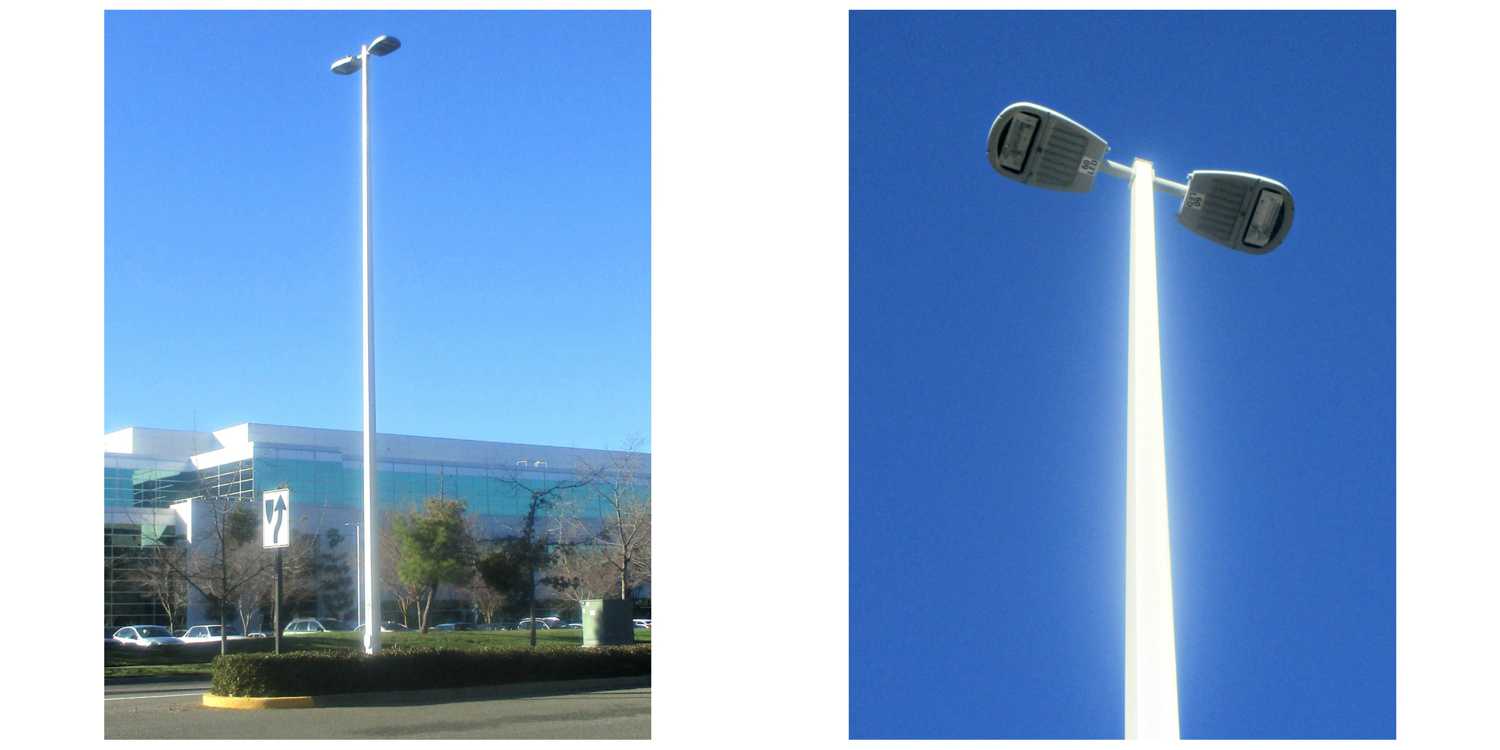Hacienda's SmartPole Street Lights Boost Broadband
Hacienda's SmartPole Street Lights Boost Broadband

Adopting energy-saving LED street lights is a growing trend for both cash-squeezed and environmentally conscious municipalities. Phoenix began the transition in August 2017, for example, while other cities, such as West Haven, Connecticut, are just beginning to plan how to replace their high-pressure sodium lights with brighter, high-efficiency LED lights. Pleasanton, meanwhile, began working on transitioning to LED technology in 2013. As a result, all of Hacienda's street lights use energy-saving LED lights.
Now Hacienda and the City of Pleasanton are going even further in implementing cutting-edge street lighting technology. A public-private partnership with Philips will eventually replace a total of 300 Hacienda street lights with innovative Philips SmartPole fixtures that both provide energy conservation and boost wireless broadband network services.
The Hidden Benefit of SmartPoles
Traditionally cellular providers have boosted their signals through unattractive devices attached to existing towers, poles, and other structures, contributing to the real and growing problem of visual blight. SmartPole technology addresses that issue by hiding small cell mobile base stations, which boost and improve mobile network performance, inside of each fixture.
"Wireless carriers are really compelled to accelerate densification of their networks due to the rising demand for enhanced mobile data access from their customers, especially in an area that's full of businesses," notes Bill McShane, National Director of Philips Connected City Experience.
"With the technology as it is evolving, broadband carriers need to have their equipment closer to where the usage is occurring, and that's usually at the street level or very close to buildings. What we're looking for is ways of working with entities like Hacienda to maintain their visually pleasing cityscape. We're looking for a balance between maintaining that pleasing cityscape and what the businesses are looking for, and that's really reliable high speed mobile data coverage."
According to the company, Philips SmartPoles were specifically designed and tested to accept FCC licensed wireless mobile network operator equipment. This enables an alternative deployment methodology for 4G LTE broadband services that streamlines, standardizes, and broadens the capacity for Internet of Things connectivity and allows for increased innovation. Each pole is connected through 4G LTE broadband services through a fiber link to its core network.
"Pleasanton is looking to take advantage of smart technologies, and we are pleased that we will soon have the first round of SmartPoles in Hacienda," says Pamela Ott, Director of Economic Development for the City of Pleasanton. "SmartPoles are like digital real estate for the Internet of Things, and as our demand for connectivity increases, so too must our thinking about how we meet this demand. These SmartPoles are an elegant solution that help us not only expand the city's broadband and cellular network services, but also remain competitive."
McShane calls the use of SmartPoles a win for cities for a variety of reasons. "We believe this drives innovation. It drives economic development because business, residents, and visitors are demanding enhanced mobile service.
SmartPoles transform street lights from a liability into an asset, says McShane. In working with Philips, a city keeps control of its assets, the street lights; it maintains an attractive cityscape by avoiding additional visual clutter; and it realizes maintenance and energy savings. Meanwhile, businesses and residents get the increased broadband access that society now demands from street lights that blend into the existing environment.
Built for the Future
The City of Los Angeles became the first city in the world to deploy the new street lighting technology from Philips with a pilot project of 100 SmartPoles in 2015. A pilot project in San Jose involving 50 SmartPoles began deployment in 2016. In keeping with Pleasanton's history as an early adopter of infrastructure innovations, it will be only the third city in the world to deploy this technology.
For the San Jose project, according to a Philips news release, the company collaborated with utility company PG&E and its metering engineering team "over an unprecedented 90 day development cycle to design, test, certify, and install a specialized two-way communicating meter that is affixed to the top of the SmartPole. This new meter measures the amount of electricity used by the mobile network and transmits the data transmitted directly back to PG&E. The new meters de-clutter dense urban areas by eliminating the need for standalone pedestal meters that are typically installed next to any equipment that uses electricity."
Collaborating with PG&E over such a short time period was an interesting experience, notes McShane. "Two large organizations came together, and we found a unique solution that enabled the project in San Jose to move forward."
All the best practices from both of the deployments will be utilized in the deployment in Hacienda, according to McShane, who expects that Hacienda tenants and residents will see enhanced data capacity through their broadband services once the new SmartPoles are in place. "Hacienda is setting itself up as an innovator and as a leader in adopting the public-private partnership model and in embracing this new technology," he says.
The current and future need for broadband access is enormous, notes McShane. "There is a tidal wide of technology coming." As autonomous vehicles become a reality, along with smart buildings, smart cities, and the Internet of Things, an increasing flood of data will need to be collected, analyzed, and acted upon. "We are building the backbone of the future by enhancing the data capacity of existing networks along with bringing fiber to each one of these locations," says McShane. "As technology advances, this will be the foundation for the future."
The first SmartPoles coming to Hacienda will use single-carrier technology for 4G LTE networks and support future networks as well. Philips is also in the process of developing a second-generation SmartPole that will support two mobile carriers.
For more information about Philips SmartPoles, visit www.lighting.philips.com/main/company/beyond-illumination/smart-cities/smart-cities-initiative/smart-pole-exclusive.




